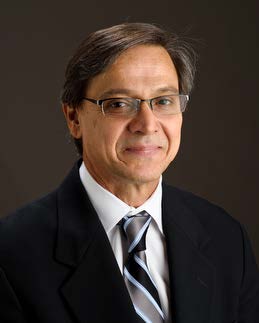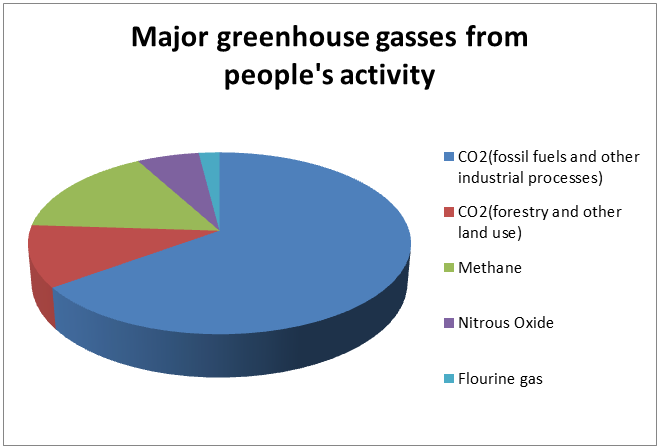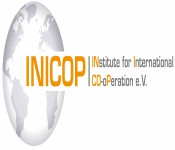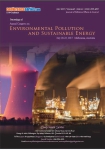
Workshop by Remus Cernea on November 22nd, 2018 | Inernational Conference on Environment and Climate Change | Bucharest, Romania
Climate Change Conferences 2018| Environmental Science Events | Global Warming congress | Pollution Control Meet| Romania | USA| Europe | Asia Pacific | Middle East | UK | 2018
Theme: Exploring new horizons & Sustainable technologies to heal the earth
Climate Change Congress 2018
Climate Change Congress 2018
ME Conference invites each one of the individuals over the globe to take part in the Worldwide Conference on Environment and Climate Alter (Climate Change Congress 2018) during November 22nd-23rd, 2018 in Bucharest, Romania which incorporates keynote speeches, Oral talks, Poster presentations and opportunity for B2B meetings on the most recent advancements in the field of Climatology, Environmental Science, Ecology, Renewable Energy, Trade and Policies, Risk, Adaptation, Mitigation Natural Resources and many more... by specialists from both Scholastic and Commerce foundation.
Environment and Climate Change conference 2018 is arranged with the theme “Exploring new horizons & Sustainable technologies to heal the earth” to cover the wide extend of critically vital sessions of Environment Science and Climate Change equally. Environment Science section will cover all the major and minor topics like will cover ecology, plant science, zoology, mineralogy, oceanology, soil science, geology and physical geography, atmospheric science and more for brief discussion upto depth and highlight the solution of environmental problems (Air Pollution, Water Pollution, Soil Pollution, Noise Pollution, Thermal Pollution, Radioactive Pollution, Light Pollution). We will also cover the technology section which plays a important role. The Future Technology, Renewable Energy like Solar Energy, Wind Energy, Wave Energy, Geothermal power, and more.
Climate Change is a change in the statistical distribution of Climate patterns when that change keeps going for an expanded period of time (i.e., decades to millions of years). Climate Change may allude to an alter in normal climate conditions, or in the time variety of climate inside the setting of longer-term normal conditions. Climate change is caused by variables such as biotic forms, varieties in sun based radiation enters the Earth Surface, Plate Tectonics, and Volcanic emissions. Certain human activities have been recognized as essential causes of progressing climate change, regularly alluded to as global warming.
The term "Climate Change" is regularly utilized to allude particularly to anthropogenic climate change (moreover known as global warming). Anthropogenic climate change is caused by human activity, as restricted to changes in climate that may have brought about as portion of Earth's common forms. In this sense, especially in the setting of natural approach, the term climate alter has gotten to be synonymous with Anthropogenic worldwide warming. Factors that can shape climate are called climate forcings or "driving mechanisms". These incorporate shapes such as assortments in sun based radiation, assortments in the Earth's circle, assortments in the albedo or reflectivity of the landmasses, air, and seas, mountain-building and continental coast and changes in greenhouse gas concentrations.
There are an assortment of climate change feedbacks that can either open up or reduce the introductory forcing. A few parts of the climate framework, such as the seas and ice caps, react more gradually in response to climate forcings, while others react more rapidly. There are too key edge variables which when surpassed can create quick change.
Why to attend:
Climate Change Congress 2018 is a flawless stage for preservationists, specialists, researchers, leaders and understudies to meet up, look at discoveries, and talk about the exploration without bounds. Impart your examination to a connected with gathering of people of your associates from around the world. Gain from logical pioneers who are outlining more manageable procedures for accomplishing an Environment and Climate Change control. Climate change Congress 2018 conference will feature 14 technical sessions, a poster session, exhibit hall, keynotes lectures and Special feature includes student workshop.
Climate Change Congress 2018 is a perfect platform for environmentalists, researchers, scientists, decision makers and students to come together, compare findings, and discuss the science of the future. Share your research with an engaged audience of your peers from around the globe. Learn from scientific trail blazers who are designing more sustainable processes for achieving a pollution controlled environment.
Noble laureates, Presidents, Vice-presidents, Deans, Chairs, Co-chairs, Department Heads, Environmentalists, Researchers, PhD Students, Non-PhD Students, etc.. Vendors will have the opportunity to introduce the latest advancements in Environmental pollution control technologies to a diverse audience by becoming a conference sponsor via exhibits or workshops.
Academia 41%
Researchers 25%
Industries 20%
Students 12%
Others 3%
Target Audience:
Our Organization would be privileged to welcome them:
- Directors of Environmental Science or related Programs or Associations
- Heads, Deans and Professors of Environmental Science and Ecology
- Executive Director on Climate Change Law
- Deputy Executive Officer at Air Resources Board
- Environmental and Climate Change Policy Analysts
- Environmental Specialists
- Climate Change Experts
- Research Fellow Environment Institute
- Professors
- Climatologists
- Environmentalists
- Scientists
- Ph.D Students
- Industries
- Academies
Highlights of latest advances on Climate Change Congress 2018
Track 1:Environmental Sustainability and Development
Environment sustainability is a worldwide, multidisciplinary which covers all points of view of the common impacts of socio-economic planning advancement. Concerned with the complex interactions between development and environment, its reason is to see for ways and implies for finishing sustainability in all human activities aimed at such advancement. It besides covers the current and creating issues in arrange to progress wrangle about and broaden the understanding of characteristic challenges as in a general sense to evenhanded and maintained financial improvement. The objective of natural sustainability is to preserve common assets and to create alternate sources of power while diminishing environmental contamination toxicology and harm to the environment. For natural sustainability, the state of the future – as measured in 50, 100 and 1,000 years is the guiding rule. Numerous projects that are established in natural sustainability will include replanting woodlands, protecting wetlands and protecting natural ranges from resource harvesting. The most fundamental feedback of natural sustainability activities is that their needs can be at chances with the needs of a developing industrialized society.
-
Massive extinctions from human activity
-
Biodiversity of food and agriculture
-
Plan to nurture innovation and creativity
-
High energy costs vulnerability
-
National biodiversity strategy and action plans
-
Climate impact on natural natural atmospheric particles
-
The military and the environment
-
Sustainable forest or sustainable profit?
-
Practices to mitigate coastal risk
Track 2: Biodiversity and Climate Change
Advanced climate change is creating pole ward extend shifts of various taxa, communities and biological systems around the world. The reaction of species to changing situations is likely to be decided generally by population reactions at edges. Over the past decade, a few models have been created to view the effect of climate change on biodiversity. Results from these models have recommended a few disturbing results of climate change for biodiversity, predicts the future results. There is sufficient prove that climate change influences biodiversity. According to the Millennium Ecosystem Assessment, climate change is likely to gotten to be one of the most noteworthy drivers of biodiversity loss by the end of the century. . The show around the world biota has been influenced by fluctuating Pleistocene (final 1.8 million years) concentrations of atmospheric carbon dioxide, temperature, precipitation, and has balanced through developmental changes, and the choice of common adaptive procedures. Such climate changes, however, happened over an intensified period of time in a landscape that was not as fragmented as it is these days and with little or no additional weight from human activities.
-
CO2 capture and sequestration
-
Sustainable decision making
-
Coastal risk management in a changing climate
-
Assessing and managing coastal flood risk
-
Non-structural approaches to coastal risk management
Track 3: Climate and Coastal Stressor
Climate change impacts on marine biological systems include different stressors, transcendently temperature, hypoxia and COâ‚‚, all of which may combine with further coastal anthropogenic stressors such as pollutants. All life forms react to these drivers, taking after possibly common standards, which are insufficiently understood. Climate change can influence coastal zones in an assortment of ways. Coasts are delicate to ocean level rise, changes in the frequency and intensity of storms, increases in precipitation, and warmer sea temperatures. In addition, rising atmospheric concentrations of carbon dioxide (CO2) are causing the seas to absorb more of the gas and ended up more acidic. This rising sharpness can have significant impacts on coastal and marine biological systems. Larger coastal populations and expanding advancement have driven to expanded loading of harmful substances, supplements and pathogens with consequent algal blossoms, hypoxia, shoreline closures, and damage to coastal fisheries. Later climate change has driven to the rise in ocean level with misfortune of coastal wetlands and saltwater interruption into coastal aquifers.
-
Increasing ocean stratification and acidification
-
Enhanced access to climate finance
-
High levels of microplastics
-
Coral prey or plastics?
-
Resilient environment
-
Environmental and governing
-
Ecosystem based adaptation to take the spotlight
Track 4: Ocean and Climate Change
Human initiated climate change threatens coastal and marine environments through sea-level rise, fermentation, and changes in climate patterns and water temperatures. The climate changes will also change the coastal progression, the reliability of sea shipping, coastal recreation and marine activities such as oil platforms and aquaculture, consequently including money related threats. Oceans and climate are indivisibly associated and oceans play a fundamental part in directing climate change by serving as a major heat and carbon sink. Our oceans are particularly defenseless to the adverse impacts from human emanations of greenhouse gasses. Since the Industrial Transformation, mankind has expanded the acidity of our oceans by 30% and has expanded the sum of carbon dioxide in our climate by over 35%, essentially from the burning of fossil fuels. Other human activities have brought about in extra major commitments of greenhouse gasses, such as methane and nitrous oxides.
-
Polar vortex defines climate change
-
Oil eating microbes
-
Typhoon seismic footprint
-
Mysterious lives of narwhals
-
Robotic Solar Powered Barges to Filter and Remove Oceanic Plastic
-
Strengthening fisheries governance and States capacities
-
Capacity development and Transfer of Marine technology
Track 5: Greenwashing
Greenwashing is terrible for the environment since it can empower shoppers en masse to do the inverse of what’s great for the environment. At its most generous, greenwashing makes claims that are neither great nor terrible for the environment — it’s fair making green claims to offer more stuff. Smart businesses are finding out that doing right by the environment really does increment benefit in numerous cases. Greenwashing is like whitewashing with a green (environmental) brush, companies and organizations making themselves and their products sound or look like they’re really helping the environment, but they luring the customers in - creating the perception of helping the environment. In some cases you are helping. In some cases, it’s greenwashing. It’s indeed more awful when they don’t make changes and claim to be a green company fair to push their plan. As the world progressively embraces the mantra of green items and administrations, the legitimate community is experiencing an expansion of case surrounding untrue and deceiving natural promoting claims.
-
Greenwash: Growing (Almost) Unchecked
-
The Health Impact of Greenwash
-
Reining In Greenwash
-
The sins of greenwash
-
Rapped for ‘greenwashing’
-
NGOs Denounce Corporate Greenwashing
Track 6: Carbon Cycle and Carbon Footprint
The carbon cycle is the circulation and change of carbon back and forth between living things and the environment. Carbon is a component, something that cannot be broken down into a simpler substance. The sum of carbon on the earth and in Earth's atmosphere is fixed, but that fixed amount of carbon is dynamic, continuously changing into different carbon compounds and moving between living and nonliving things. The term carbon footprint is characterized as the amount of carbon (more often than not in tonnes) is being radiated by an organization, event, product or individual directly or indirectly. Everyone’s carbon impression is different depending on their area, habits and personal choice. People concerned with the environment and global warming usually try to reduce their carbon output by increasing their home's energy efficiency and driving less.
-
Coastal Carbon Budgets
-
Measuring oxygen to unravel the forest carbon balance
-
Mechanisms of Increased Terrestrial Carbon Uptake
-
Recent variability and trends in the global ocean carbon sink
-
Acidification and carbonate system
-
The ocean carbon cycle modelling of Ernst Maier-Reimer
-
Decadal predictions of the oceanic carbon sink: skills and challenges
Track 7: Renewable Energy
Generation of biochar (the carbon (C)-rich solid shaped by pyrolysis of biomass) and its storage in soils have been proposed as a means of abating climate change by sequestering carbon, while at the same time giving energy and increasing crop yields. Significant uncertainties exist, in any case, regarding the impact, capacity and sustainability of biochar at the worldwide level. In this paper we estimate the maximum sustainable technical potential of biochar to moderate climate change. Solar energy and water energy era, and building of organisms which produces biofuels are a few illustrations of the alternatives. This Perspective puts these opportunities into a bigger context by relating them to a number of perspectives in the transportation and control era segments. It in addition gives a preview of the current vitality scene and discusses a few research and advancement opportunities and pathways that could lead to a prosperous, economical and secure vitality future for the world.
-
Renewable energy technologies and markets
-
Integration into present and future energy systems
-
Renewable energy and sustainable development
-
Mitigation potentials and costs
-
Policy, implementation and financing
-
Advancing knowledge about renewable energy
-
Potential of solar energy to mitigate climate change
Track 8: Trade and Climate Change Policies
A number of components have given rise to the marvelous development in world exchange. The information technology revolution has made it easier to trade and to coordinate generation of parts and components of a final good in distinctive nations. Technological revolutions and changes in exchange and speculation approaches have both democratized trade and made it easier to “unbundle” production. The parts and components that make up the final item can be made in distinctive zones around the globe. Trade economists have created a conceptual system for analyzing how trade opening can cause environmental impacts. This system can be utilized in this manner to think about the link between trade opening and climate change. The “scale” effect refers to the impact on greenhouse gas emissions from the increased yield or economic activity resulting in the freer trade. The common assumption is that trade opening will increment economic activity and thus energy use. Everything else being rise to, this increment in the scale of financial activity and energy use will lead to higher levels of greenhouse gas emissions.
-
Conflicting Pressures on Multinationals in the Oil Industry
-
Impacts on energy market
-
Quantifying trade market
-
Energy exporter impacts and compensation
-
Impacts of energy-extensive goods
-
Impacts on abatement on overall trade structure and volume
Track 9: Climate Change and Health
All populations will be influenced by climate change, but a few are more vulnerable than others. Individuals living in small island developing states and other coastal districts, megacities, and mountainous and polar regions are especially vulnerable. Over the final 50 years, human activities – especially the burning of fossil fuels have released adequate amounts of carbon dioxide and other greenhouse gasses to trap additional heat in the lower atmosphere and influence the worldwide climate change. In spite of the fact that global warming may bring a few localized benefits, such as fewer winter deaths in mild climates and increased food production in certain regions, the overall health impacts of a changing climate are likely to be overwhelmingly negative. Climate change impacts social and common determinants of wellbeing – clean air, safe drinking water, satisfactory nourishment and secure shield. Locale with frail prosperity system – for the most part in developing nations – will be the least able to oversee without help to get prepared and respond.
-
Recent findings and future steps
-
Policy responses to protect public health
-
Global Climate Change and Emerging Infectious Diseases
-
Strengthening Health Resilience to Climate Change
-
Climate change affects and threatens public health
-
Assess the need for a statewide climate vulnerability assessment
-
Climate Change Dangers Are ‘Higher Than Ever’
Track 10: Climate Change Risk, Policy, and Law
Climate change raises critical social, natural and legitimate challenges. The health administration system applying to climate change is complex and multi-level. Worldwide climate change presents one of the most troublesome issues the worldwide community has ever stood up to. Since the emergence of climate change as a new and progressively important component in energy approach, more consideration has been given to the need to receive coordinates approaches to energy policy making, with climate change and energy security showing up as vital drivers for future energy policy. The most critical characteristic of climate change as a policy issue is instability. From climatology to financial matters, instabilities are unavoidable, huge and troublesome to resolve. In any case, the modern financial hypothesis of natural approach under instability gives a clear guide to the plan of a suitable arrangement. A productive and viable approach would be a hybrid that consolidates the leading highlights of tradable grants and emissions charges.
-
Absence of law scares investors
-
Scientific, legal and political elements
-
Treaties and non-binding agreements
-
Legislature, executive and judicial action
-
Foreign legal developments: comparative law and policy
-
Government efforts and transnational collaboration
-
Risks and possibility
Track 11: Endangered Species and forestry
Global warming is as of now having critical and costly effects on our communities, our health, and our climate. These impacts will proceed to heighten, develop ever more costly and harming, and progressively influence the whole planet. The signs of climate change include higher temperatures, modified precipitation patterns, and more frequent or seriously extreme events such as heat waves, drought, and storms. Climate change over the past ∼30 years has produced numerous shifts in the distributions and abundances of species and has been implicated in one species-level extinction. The global scale adjusting Earth’s biophysical and natural frameworks at the planetary scale – as is as well of climate change shifts on an exceptionally essential level from the various other familiar natural concerns that refer to restricted toxicological or microbiological threats. Without a doubt, climate change implies that, these days, we are demonstrated by stratospheric ozone utilization, accelerating biodiversity losses, stresses on terrestrial and marine food-producing frameworks, consumption of freshwater supplies, and the worldwide spread of persistent organic pollutants.
-
Disaster risk, climate change and international development.
-
Global food supply and risk of hunger
-
Impacts and Adaptation in the Agricultural Sector
-
High risk to small-range species from climate change
-
Integrating bio-climate with population models
-
Climate Change Impacts on Biodiversity
-
Climate change adaptation as a risk-based decision problem
Track 12: Space Monitoring of Climate Variable
Our climate is changing because of distinctive variables affecting earth at large. The need of measuring stations in numerous remote regions and particularly over the endless sea zones implies that satellites are the only way to assemble information on ‘Essential Climate Variables’ – ECVs. By utilizing Earth observation strategies from space, we can screen global natural change not possible with other procedures. Climate research, monitoring, prediction, and related administrations depend on exact perceptions of the climate, land, and sea, adequately tested universally and over adequately long time periods. Satellite estimations have given coordinate observational proves that later increases in greenhouse gas concentrations have created the anticipated changes to the active energy transmitted by the Earth. However, while they play a basic part in assessing and improving the models used to make future climate projections required by policymakers they are not however of sufficient exactness to absolutely set up the pace and scale of the climate response to changes caused by human activity.
-
Challenges for Atmospheric Research
-
Integrated Space Technology Applications for Climate Change
Track 13: Climate Changing Cloud Heights
An advanced examination of 15 years of NASA satellite cloud estimations finds that clouds around the world show up no conclusive trend during this period toward decreasing or extending in height. Clouds are both Earth's cooling sunshade and its assurance cover. As of presently their cooling affect wins all around. But as Earth heats, the characteristics of clouds over diverse around the world regions- their thickness, brightness and height are anticipated to alter in ways that investigators don't completely get it. These changes could either increase warming or coordinate it Sticking down a few of the uncertainties around clouds is one of the most prominent challenges in choosing the future rate of worldwide climate change. Cloud heights do, in any case, shift significantly from year to year in association with climate and climate marvels. The response of clouds to a warming atmosphere has been one of the major sources of instability in evaluating exactly how much the world will warm up from the collection of greenhouse gasses, as a few changes would enhance global warming, while others would neutralize it.
-
Impacts of clouds on global warming
-
Clouds help us in global warming
-
Enigma of clouds
-
Climate science
-
Cloud: The storm chaser
Track 14: Vital Signs of the Planet
Vital Signs of the Planet website features a different set of assets related to the measurement, investigation, and dangers of worldwide climate change. Interactive highlights include the Climate Time Machine, which permits users to go in reverse and forward through four distinctive climate indicators counting Ocean Ice, Ocean Level, Carbon Dioxide, and Worldwide Temperature. Vital Signs of Planet Soil is an automatic concerto for bass trombone that seeks to depict the “vital signs” of the soil as related to worldwide warming. Worldwide warming is logical truth. The level of mindfulness around worldwide warming must be raised so that steps can be taken to switch or moderate down the weakening of our planet. Each development of the concerto depicts one of the major occasions caused by global warming, Heat wave, Glacial Retreat, and Deluge. Carbon dioxide, a greenhouse gas, is not especially destructive to us, but when discharged into the environment at a certain amount will contribute to the warming of our planet since of its heat-trapping nature. The capacity of carbon dioxide and other greenhouse gasses (methane, nitrous oxide, etc.) to influence the exchange of infrared energy through the environment is the logical basis of numerous instruments flown by NASA.
-
Heat emission from cloud
-
Future trouble
-
Optimistic scenario
-
Worst-case scenario
-
Climate change could triple amazon drought
-
People still questions climate change
-
Technological breakthrough
-
Future reasons of hope
Track 15: Causes and Effects of Climate Change
Climate change is a genuine and urgent issue. There is now an overwhelming body of scientific proves that human movement is causing global warming, with the fundamental sources of greenhouse gasses, in order of global importance, being electricity generation, land-use changes (particularly deforestation), the fastest growing sources are transport and electricity. Increasing carbon dioxide in the atmosphere is being absorbed by the oceans, increasing their acidification – damaging coral reefs and marine life. Areas that were once white with snow are now retreating to only the highest points of the world. Incidents of extreme weather are increasing, from flooding to tropical storms. Advance biological issues are the threat of species termination and major changes to the worldwide landscape. Pressure is mounting on water and food sources, as environments change and worldwide populations proceed to increase.
-
Global means surface temperature
-
Carbon dioxide levels
-
Carbon dioxide levels
-
Climate change consequences
Track 16: Control Climate Change
The enormity of global warming can be overwhelming and crippling. Climate change is one of the most critical dangers confronting the world nowadays. Avoiding the most noticeably awful results of climate change will require huge cuts in global greenhouse gas emissions. Managing with climate change will require high-level political administration and deal-making of a sort that is troublesome to accomplish through formal arrangements with the 194 parties to the UN Framework Convention on Climate Change by dedicated climate ambassadors alone. In order to viably address worldwide warming, we must essentially decrease the sum of heat-trapping emanations we are putting into the atmosphere. A commonly cited objective is to stabilize GHG concentrations around 450-550 parts per million (ppm), or around twice pre-industrial levels. This is the point at which many accept the most harming climate change effects can be avoided.
-
Smog eating concretes
-
Individuals can make a difference
-
New innovations making important Strides
-
Shared sense of urgency
Summary of the Climate Change Congress 2018
Advances in the science and perception of environmental change are giving a clearer comprehension of the inborn inconstancy of Earth's atmosphere framework and its imaginable reaction to human and common impacts. The ramifications of environmental change for nature and society will depend not just on the reaction of the Earth framework to changes in radiative forcings, yet in addition on how mankind reacts through changes in innovation, economies, way of life and approach. At the point when free markets don't boost society's welfare, they are said to 'fall flat' and arrangement intercession might be expected to adjust them. Numerous business analysts have depicted environmental change for instance of a market disappointment – however in reality various particular market disappointments have been distinguished. The core one is the so-called 'greenhouse externality'. Ozone depleting substance outflows are a reaction of monetarily significant exercises. . The nursery gas externality is accompanied by different other advertise failures, counting those rising from an absence of informations around how to decrease emanations, network impacts and an absence of advancement inspirations. A liberal composing in the course of recent years has evaluated tradeoffs among cash and casualty threats. These qualities in turn serve in as appraisals of the estimation of a factual life. Quickening the improvement of unused low-carbon innovations and advancing their worldwide application are key challenges for stabilizing air greenhouse gas (GHG) outflows. Thus, innovation is at the center of current talks surrounding the post-Kyoto climate administration. The challenge of technology diffusion on a worldwide scale is too compounded by a lack of data. There is neither a clear and broadly accepted definition of what constitutes a “climate change–mitigation technology” nor a broad understanding of how such innovations are diffused globally. Prove can be marshaled to support either the view that contamination decrease is a cost burden on firms and is hindering to competitiveness, or that decreasing outflows increments productivity and spares cash, giving firms a cost advantage.
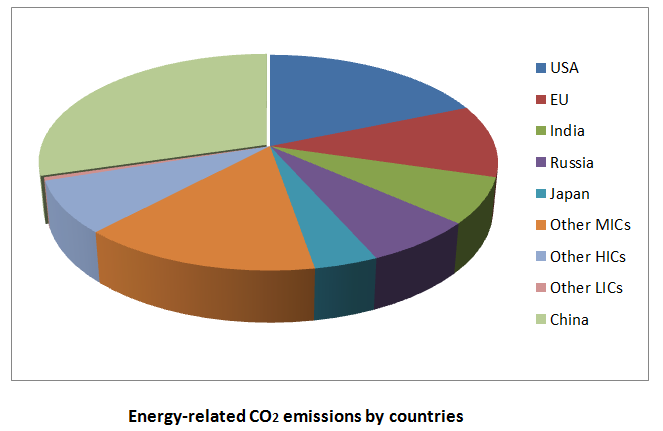
GHG is the main component for the environment and climate change. Maximum amount of GHG gases are emitted from industries, transportation, energy supply, forestry and Agriculture.
More amount of carbon dioxide gases is produced from fossil fuels and other industrial processes i.e. 65%. People’s activity has resulted in the production of methane gas(16%), nitrous oxide(6%), fluorine gas(2%) etc.
SCOPE AND IMPORTANCE:
For the last four decades, several environmental problems—such as pollution, global warming, ozone layer depletion, acid rain, deforestation, and desertification—have remained a major focus of scientists, policy makers, and common public across the world. These problems are perceived as the major threats to the life-supporting environment of the earth, thus making our survival on the planet increasingly unsafe. In order to tackle these challenges, holistic knowledge about working of our life-supporting environment and thorough understanding of the dynamics of these problems become imperative. Environmental science, therefore, integrates approaches of various academic disciplines to fulfil its objectives. Increasing population, Urbanization and poverty have generated pressure on the natural resources and lead to a degradation of the environment. Climate is one of the pivotal and dynamic forces for the natural history. TO PREVENT THE ENVIRONMENT FROM FURTHER DEGRADATION, the supreme court has ordered and initiated environmental protection awareness through government and non-government agencies to take part in protecting our environment.
Environmental pollution cannot prevented by laws alone. Public participation is equally important with regard to environmental protection.
Why Romania?
As the recent researches suggest that environmental changes and climatic factors are also related to the disease, an international conference is set up at Bucharest, Romania. Bucharest is the major city in Romania and is the largest industrial and financial city of Romania. The Climate change congress 2018 in Romania, gives us the Inkling of about 14 Countries from South-Eastern Europe in Many Aspect and Underpinning of European Civilization. When it comes to health care sectors Romania plays a vital role among all by offering Universal Health Care System.
Why to Attend?
Environment and Climate Change 2018 meeting will highlight specialized sessions, publication session, show lobby, keynotes addresses and Special element incorporates understudy workshop.
Environment and Climate Change 2018 is a flawless stage for preservationists, specialists, researchers, leaders and understudies to meet up, look at discoveries, and talk about the exploration without bounds. Impart your examination to a connected with gathering of people of your associates from around the world. Gain from logical pioneers who are outlining more manageable procedures for accomplishing a Environment and Climate Change control. Climate change Congress 2018 conference will feature 14 technical sessions, a poster session, exhibit hall, keynotes lectures and Special feature includes student workshop.
Climate Change Congress 2018 is a perfect platform for environmentalists, researchers, scientists, decision makers and students to come together, compare findings, and discuss the science of the future. Share your research with an engaged audience of your peers from around the globe. Learn from scientific trail blazers who are designing more sustainable processes for achieving a pollution controlled environment.
Noble laureates, Presidents, Vice-presidents, Deans, Chairs, Co-chairs, Department Heads, Environmentalists, Researchers, PhD Students, Non-PhD Students, etc.. Vendors will have the opportunity to introduce the latest advancements in Environmental pollution control technologies to a diverse audience by becoming a conference sponsor via exhibits or workshops.
- Academia 41%
- Researchers 25%
- Industries 20%
- Students 12%
- Others 3%
Top Societies Associated with Pollution Control Research
Around the Globe
- The International Biometrics Society (Australasian Region)
- The International Environmetrics Society (TIES)
- American Statistical Association Section on Statistics and the Environment
- International Environmental Modelling and Software Society (IEMSs)
- Royal Statistical Society Environmental Statistics Section
- Worldwide pollution Control Association
- Environmental Protection Agency
- National Association of Clean Air Agencies
- Air & Waste Management Association
- Cen SARA (Central States Air Resource Agencies)
- USDA Agricultural Air Quality Task Force
- Air Pollution Control Equipment Manufacturers Association of Australia
- Australian Marine Sciences Association
- Total Air Pollution Control (TAPC) Sydney, Australia
- The Australian Water Association
- Ecological Society of Australia
- The Environment Institute of Australia and New Zealand
- Food & Agricultural Organisation of the United Nations
- Australian Institute of Environmental Health
Target Audience
Noble laureates, Presidents, Vice-presidents, Deans, Chairs, Co-chairs, Department Heads, Environmentalists, Researchers, PhD Students, Students, etc.. Vendors will have the opportunity to introduce the latest advancements in pollution control technologies to a diverse audience by becoming a conference sponsor via exhibits or workshops.
· Academies
· Researchers
· Industries
· Students
· Others
. Nobel Laurites
Related Conferences: Climate Change Congress| Environmental Science Events | Oceanography Meetings| Earth Science Conferences
- International Conference on Environmental Microbial Biofilms and Human Microbiomes, October 18-19, 2018 Dubai, UAE
- 7th International Conference on Climate Change and Medical Entomology, October 15-16, 2018 Dubai, UAE
- 2nd Annual Congress on Soil & Water Sciences, June 14-15, 2018 Dublin, Ireland
- 5th International Conference on Geological & Environmental Sustainability, August 13-14, 2018, Bali, Indonesia;
- 6th International Meeting on Oceanography, September 21-22, 2018 Dallas, Texas, USA;
- 4th International Conference on GIS & Remote Sensing, September 27-28, 2018 Berlin, Germany;
- 6th International Conference on Oceanography & Marine Biology, October 07-09, 2018 Melbourne, Australia;
- 3rd International Convention on Geosciences & Remote Sensing, October 19-20, 2018 Ottawa, Ontario, Canada
- International Conference on Geology & Earth Science, May 2-4, 2018 , Rome, Italy
- 4th International Conference on Pollution Control & Sustainable Environment, July 26-28, 2018 Rome, Italy
- 5th Global Summit and Expo On Pollution Control, August 03-04, 2018 Oslo, Norway
- 4th World Congress on Climate Change and Global Warming, August 06-07, 2018 Osaka, Japan
- 36th International Conference on Environmental Chemistry & Water Resource Management, September 24-25, 2018 Chicago, Illinois, USA
- 5th World Conference on Climate Change and Global Warming, May 23-24, 2018 New York, USA
- 5th World Conference on Climate Change, October 4-6, 2018 Park Inn by Radisson, London, UK
- 6th Global summit on Climate Change, Nov 19-20, 2018 Paris, France
- 2nd International Conference on Renewable Energy and Resources, August 27-28, 2018 Boston, Massachusetts, USA
- 3rd World Congress on Petroleum Engineering and Natural Gas Recovery, July 20-21, 2018 Sydney, Australia
- 5th World Congress and Expo on Green Energy, June 14-16, 2018 London, UK
- 3rd Conference on Geo Sciences, October 13-14, 2018, Canada, USA
- Conference on Geology & Earth Science, May 2-4, 2018, Rome, Italy
- 9th Conference on Reduce, Reuse and Recycling, December 12-13, 2018, Canada, USA
- 2nd Conference on Ecology and Ecosystem, September 15-16, 2018, Canada, USA
- 8th World Congress and Expo on Recycling, June 25-26, 2018, Berlin, Germany
- World Conference on Ecology, March 19-20, 2018, Berlin
- 2nd International Conference on Climate Change, February 15-16, 2018, Colombo, Sri Lanka
- International Conference on Climate Change & Water, February 05-06, 2018, Tours, France
- Conference on Global Climate, March 23-25, 2018, Guilin, China
- 7th Global Conference on Global Warming, June 24-28, 2018, Izmir, Turkey
Related societies:
ASIA-PACIFIC & MIDDLE EAST
- Indonesian Academy of Sciences
- Chinese Academy of Sciences
- Academy of Sciences Malaysia Greenpeace
- Academy of Sciences of the Islamic Republic of Iran
- Bangladesh Academy of Science
- Pakistan Academy of Sciences, Palestine Academy for Science and Technology
- Science Council of Japan
- National Academy of Sciences of the Kyrgyz Republic
- National Academy of Sciences
USA:
- American Association of State Climatologists
- American Academy of PediatricsAmerican Association for the Advancement of Science
- American Association of Petroleum Geologists (AAPG)
- American Association of Wildlife Veterinarians
- American Fisheries Society
- American Geophysical Union (AGU)
- American Institute of Biological Sciences
- American Institute of Professional Geologists (AIPG)
- American Public Health Association
- American Society for Microbiology
- American Water Resources Association (AWRA)
- Society of American Foresters,
EUROPE:
Global Warming 2017 Report
3rd Annual Congress on Pollution and Global Warming was organized during October 16-18, 2017at Atlanta, Georgia, USA. The conference was marked with the attendance of Editorial Board Members of supporting journals, Scientists, young and brilliant researchers, business delegates and talented student communities representing more than 25 countries, who made this conference fruitful and productive.
This conference was based on the theme “Innovation, Integration & Implementation to retard the Pollution and Global warming” which included the following scientific tracks:
- Ozone depletion
- Climate change
- Greenhouse effect
- Carbon cycle
- NASA’s Earth observing system
- Atmospheric chemistry
- Ecosystem
- Pollution
- Waste Water pollution
- Soil pollution
- Waste management & treatment
- Radiation pollution
- Industrial sector
- Fossil fuels and energy
- Thermal pollution
- Deforestation
The Organizing Committee would like to thank the moderator Mr. Rohail Riaz Khoushab (De Anza College, USA) for their contribution which resulted in smooth functioning of the conference.
The conference proceeded through various scientific sessions and plenary lectures, of which the following topics were highlighted as Keynote presentations:
Hector M Guevara-NuEnergy’s power house generator and clean water system: A game changing disruptive technology which will revolutionize the sustainable energy industry (president at NuEnergy Technologies, USA)
Essam E Khalil- Refrigerants and building codes nexus (Associate Professor of Mech Engineering)
William P Sokeland- Supernova explosion’s space weather: Correlated mega fauna extinctions and biosphere mega-disturbances global warming & WZ Sagittae, SN 1054 and SN 1006 space weather (University of Florida, USA)
Melvin L. Myers- Bowtie analysis of global warming: Linking mitigation to adaptation (Emory University, USA)
Gabor Patonay- A green chemistry approach to fluorescence: Silica nanoparticles encapsulated dyes (Professor of Analytical Chemistry at Department of Chemistry)
Eckhardt Alexander- ToxBox – A tool for evaluating anthropogenic micropollutants in drinking-water (Federal Environment Agency (UBA), Germany)
Ron Tolmie- Concurrent storage of heat and electricity (HEAT networks, Canada)
Various sessions were chaired and co-chaired by: Ron Tolmie, HEAT NETWORKS, Canada; Gabor Patonay, Georgia State University, USA; Patrick Pale, University of Strasbourg, France; Melvin L. Myers, Emory University, USA; Eckhardt Alexander, Federal Environment Agency; Hector M. Guevara, NuEnergy Technologies,USA; William P Sokeland, University of Florida, USA.
ME Conferences has taken the privilege of felicitating Global Warming 2017 Organizing Committee, Editorial Board Members and Keynote Speakers who supported for the success of this conference.
The esteemed guests, keynote speakers and researchers shared their innovative research and vast experience through their informative presentations at the Piedmont 2 of Global Warming 2017. We are glad to inform that all accepted abstracts for the conference have been published in Journal of Trends in Green Chemistry: Open Access.
We are also obliged to various experts, company representatives and other eminent scientists who supported the conference by facilitating the discussion forums. We sincerely thank the Organizing Committee Members for their gracious presence, support, and assistance. With the unique feedback from the conference, ME Conferences would like to proudly announce the commencement of the “8th International Conference on Environment and Climate Change” to be organized during November 22-23, 2018 in Bucharest, Romania.
Mark your calendars for the upcoming Conference; we are hoping to see you soon!
For More details: https://environmentclimate.conferenceseries.com/
Climate Change: Threat to Biodiversity
A Global issue in the current situation, due to several activities of Human or by the Natural disaster. Alongside factor pollution (air, water, soil etc) and overexploitation to land-use change and habitat loss. Moreover, in many places, these are still greater immediate dangers world’s wildlife than climate change. According to a new set of reports from the leading global organization on ecosystems and biodiversity Climate change will be the fastest-growing cause of species loss.
As per the new series of reports emphasize that action on global warming is also active in favor of wild plants and animals.
Land degradation, biodiversity loss, and climate change are three different phase of the same central challenge:
"We cannot afford to tackle any one of these three threats in isolation—they each deserve the highest policy priority and must be addressed together.”- Chairman Robert Watson
Either by human activities or by natural disasters—may be adversely affecting more than half a 7.3 billion people (approx) around the globe, resulting in losses in the health of biodiversity and ecosystem
Deforestation, the destruction of wetlands and other forms of land conversion and the industries, chemical waste, automobiles release massive amounts of carbon and other harmful gases into the atmosphere causing global warming. Climate change can continue the cycle by thawing out frozen ecosystems, creating harsher conditions for vegetation to survive, and increasing the severity of storms and other natural disasters, which can also damage natural landscapes.
There are many factors which cause climate changes. We should step forward and plan every move so that we can slow down the process.
____________________________________________________________________________________________
The health effect of air pollution from traffic
Each year, over 400,000 individuals in Europe pass on rashly due to air contamination -- and there's clear proof that the mortality rate is higher among individuals living in zones with more contaminated air. "Decreased contamination would avoid 55-93 untimely deaths (2-4% of all cases) each year, 21 modern cases of childhood asthma (6% of all cases), 95 cases of childhood bronchitis (10% of all cases), 30 hospitalisations for respiratory illnesses (1% of all cases), 87 dementia cases (4% of all cases) and 11 cases of pregnant ladies with preeclampsia (11% of all cases)," clarifies Ebba Malmqvist, analyst at the Department of Occupational and Natural Medicine at Lund University.
The change would moreover anticipate 2 729 days of sick take-off and 16 472 days of decreased activity due to sick wellbeing, the study found. The analysts have been exceptionally cautious in their interpretations, and the impacts of diminished air contamination would likely be distant greater in reality. Despite the reality that analysts have been working on natural considerations for more than 10 a long time, the decision-makers have clearly not absorbed the information. Environmental zones exist in other cities, where the strictest zone forbids cars fuelled by petrol or diesel.
______________________________________________
Climate Change affects more to Women than Man
Women are more likely than men to be influenced by climate alter, studies appear. UN figures demonstrate that 80% of individuals uprooted by climate alter are women. Roles as basic caregivers and providers of food and fuel make them more vulnerable when flooding and dry season happen. In the dry season, men go to the towns... leaving ladies to see after the community, with dry seasons presently becoming longer, ladies are working harder to feed and care for their families without support. "They gotten to be more powerless... it's exceptionally difficult work. It isn't just ladies in rural zones who are influenced. Universally, ladies are more likely to involvement poverty, and to have less financial control than men. This makes it troublesome to recover from disasters which influence infrastructure, employments and housing. Much as climate alter is quickened by human practices, the effects of climate and climate events is impacted by societal structures. Disasters don't influence all individuals equally. Another study crossing 20 years famous that disastrous occasions brought down women's life expectancy more than men; more ladies were being killed, or they were being killed younger. In nations where women had greater socioeconomic power, the difference reduced.
In acknowledgment of this endless issue, governments and organizations working on climate alter are slowly moving to include women’s voices in policy and planning. The Scientific Committee has updated the need for sex sensitive reactions to the causes of climate alter, however the normal representation of women in global climate negotiating bodies is below 30%. The numbers do not improve at the nearby level.
"Women are often not involved in the decisions made about the responses to climate change, so the money ends up going to the men rather than the women," environmental scientist
"Women are half the world. It is very important for them to participate in all major decisions,"
"Climate change is not a fight for power, "it's a fight for survival."
______________________________________________
Air Pollution: Affects our Health Condition
We discharge an assortment of chemicals into the air when we burn the fossil fuels we utilize each day. We breathe air to live and what we breathe features a direct affect on our health. Toxins counting nitrogen dioxide and particulate matter from street activity and sulphur dioxide, from the burning of fossil fuels, have been connected to stifled lung development in children, asthma, heart infection and the onset of type 2 diabetes. The presentation of pregnant ladies to air contamination has moreover been found to influence to foetal brain development.
We live in an biological system where the activity of one has the potential to influence the numerous. This could be a great or an awful thing, depending on what the activity is. Our mistakes has contaminated the environment in which we are living and waking up. We are attempting to invert the damage. The great news is that each positive activity counts. The little exertion you make towards a greener environment can begin a healing ripple impact. We may still save what is left of our common assets and make the world a much better place to live in for our future generation. Even healthy individuals can experience health impacts from contaminated air counting respiratory irritation or breathing troubles during work out or open air exercises.
____________________________________________________________________________________________
The Effects: Ocean Acidification on Coral Reefs
Most individuals are recognizable with the concept that compares coral reefs to submerged rainforests. Coral reefs shape the most biodiverse territories in the sea, and their nearness is fundamental to the survival of thousands of other marine species - numerous of which we depend on for food. Strong shell corals are the reef-building corals, and their stonelike structures are composed of calcium carbonate, the same substance found in the shells of numerous marine life forms counting clams and snails. Like these mollusks, corals must have get to to accessible calcium in the seawater in arrange to construct their difficult skeleton. This is particularly vital in the early stages of a coral polyps's life, when it settles onto a difficult substance and begins "building" its skeleton. A few ponders have appeared a 52-73% decrease in larval settlement on reefs that are encountering lower pH levels. Researchers can too degree the calcification rates of difficult corals, and sea fermentation has had a negative affect on the rate at which corals calcify. This implies that coral colonies in the future may be more fragile and less resilient to other variables affecting their survival. Ocean acidification is just one more risk to the success of hard corals. Coral reefs are as of now being influenced by numerous other pressures, a few human-related and a few natural. Warming sea temperatures are contributing to coral dying and making them more vulnerable to diseases. Supplement and chemical contamination coming into the seas from streams is moreover making suitable coral territory exceptionally rare. Normal dangers affecting coral reefs include predation from urchins and a variety of fishes, and also tropical storms. Coral reefs are actually exceptionally versatile to numerous of these dangers, but presently their capacity to recolonize and develop tough structures is being compromised by sea acidification. Now and then, coral territory is continuously being supplanted by non-calcifying living beings, like seagrass, once the coral has been killed. Protecting oceans as a whole will help corals to maintain resiliency in the face of these threats.
What Is Climatology?
Climatology is a science which deal with climates and investigates their phenomena and causes “the description of the long-term weather pattern of a particular area”.
Climatology is the study of the no. of factors that influence weather, and the influence of weather on the environment. These include water, atmosphere, and geology.
What Does a Climatologist Do?
The Climatologist is varied and exciting. Depending on the position, A climatologist might do hands on research such as taking water or soil samples, then analyse and report on the data. They may make presentations on their research at seminars or conferences, or provide an analysis of other research to employers, government officials, or other interested clients, applying the research to address local climate issues, or to determine how machines in industries best work under different climate conditions. working with industry to mitigate their effect on the environment and to work within the environmental constraints of an area to maximize savings and profit for the company as well as minimize environmental impact.
____________________________________________________________________________________________
Environmental Pollution Caused by Factories: Climate Change Congress 2018
Industrial contamination can affect your wellbeing by presenting destructive particles that can ended up suspended in the air as well as heavier materials that stay on the surface, sullying soil and groundwater. Sources of contamination have expanded consistently since the Mechanical Transformation due to customer request and dependence on routine vitality assets such as coal and oil. In 2013, a Massachusetts Institute of Innovation study found that about 200,000 individuals pass on each year from air contamination alone. Contamination is regularly more awful in creating nations such as India which have few natural regulations that The popularity of mass-produced manufacturing plant cell phones and customer hardware has expanded the sum of overwhelming metals in the environment. Overwhelming metals such as lead, cadmium, mercury and arsenic are presented to the environment during production line generation as well as when a customer throws them away.
Nearly 85 percent of energy in the United States comes from carbon emanating fossil powers. A few have been caught dumping waste straightforwardly into streams, which too increments the chance of illness transmission through liquids such as blood. Pesticides from agricultural waste moreover conclusion up in soil, water and air, and can be harmful to the living things they come in contact with.
____________________________________________________________________________________________
Conference Highlights
- Environmental Sustainability and Development
- Biodiversity and Climate Change
- Climate and Coastal Stressor
- Ocean and Climate Change
- Greenwashing
- Carbon Cycle and Carbon Footprint
- Renewable Energy
- Trade and Climate Change Policies
- Climate Change and Health
- Climate Change Risks, Policy and Law
- Endangered Species and forestry
- Space Monitoring of Climate Variable
- Climate Changing Cloud Heights
- Vital Signs of the Planet
- Causes and Effects of Climate Change
- Control Climate Change
To share your views and research, please click here to register for the Conference.
To Collaborate Scientific Professionals around the World
| Conference Date | November 22-23, 2018 | ||
| Sponsors & Exhibitors |
|
||
| Speaker Opportunity Closed | Day 1 | Day 2 | |
| Poster Opportunity Closed | Click Here to View | ||
Useful Links
Special Issues
All accepted abstracts will be published in respective Our International Journals.
- Journal of Environmental & Analytical Toxicology
- Journal of Earth Science & Climatic Change
- Journal of Ecosystem & Ecography
Abstracts will be provided with Digital Object Identifier by










